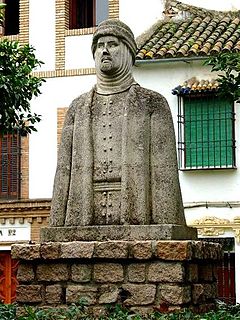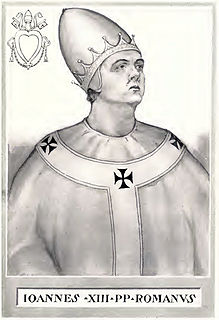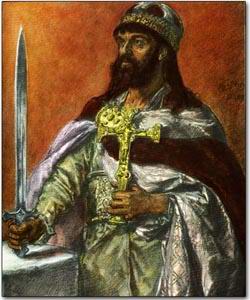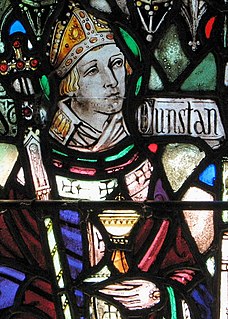Related Research Articles
The 1000s was a decade of the Julian Calendar which began on January 1, 1000, and ended on December 31, 1009.
Year 1000 (M) was a leap year starting on Monday of the Julian calendar. In the proleptic Gregorian calendar, it was a non-leap century year starting on Wednesday. It was also the last year of the 10th century as well as the last year of the 1st millennium of the Christian Era ending on December 31, but the first year of the 1000s decade.
The 830s decade ran from January 1, 830, to December 31, 839.
The 840s decade ran from January 1, 840, to December 31, 849.
The 900s decade ran from January 1, 900, to December 31, 909.
The 910s decade ran from January 1, 910, to December 31, 919.
The 920s decade ran from January 1, 920, to December 31, 929.
The 930s decade ran from January 1, 930, to December 31, 939.
The 940s decade ran from January 1, 940, to December 31, 949.
The 960s decade ran from January 1, 960, to December 31, 969.
The 970s decade ran from January 1, 970, to December 31, 979.
The 980s decade ran from January 1, 980, to December 31, 989.
The 990s decade ran from January 1, 990, to December 31, 999.

Year 966 (CMLXVI) was a common year starting on Monday of the Julian calendar.

Year 961 (CMLXI) was a common year starting on Tuesday of the Julian calendar.

Year 950 (CML) was a common year starting on Tuesday of the Julian calendar.

Year 965 (CMLXV) was a common year starting on Sunday of the Julian calendar.

Year 960 (CMLX) was a leap year starting on Sunday of the Julian calendar.

Year 956 (CMLVI) was a leap year starting on Tuesday of the Julian calendar.

Year 953 (CMLIII) was a common year starting on Saturday of the Julian calendar.
References
- ↑ Treadgold, Warren T. (1997), A History of the Byzantine State and Society, Stanford, CA: Stanford University Press, p. 489, ISBN 0-8047-2630-2 .
- ↑ Bóna, István (2000). The Hungarians and Europe in the 9th-10th centuries. Budapest: Historia - MTA Történettudományi Intézete, p. 27. ISBN 963-8312-67-X.
- ↑ Timothy Reuter (1999). The New Cambridge Medieval History, Volume III, p. 250. ISBN 978-0-521-36447-8.
- ↑ Timothy Reuter (1999). The New Cambridge Medieval History, Volume III, p. 247. ISBN 978-0-521-36447-8.
- ↑ Early Sources, p. 451. The corresponding entry in the Annals of the Four Masters, 950, states that the Northmen were the victors, which would suggest that it should be associated with Eric Bloodaxe.
- ↑ Vasiliev, A.A. (1968). Byzance et les Arabes, Tome II, 1ére partie: Les relations politiques de Byzance et des Arabes à L'époque de la dynastie macédonienne (867–959). Brussels: Éditions de l'Institut de Philologie et d'Histoire Orientales.
- ↑ Bóna, István (2000). The Hungarians and Europe in the 9th-10th centuries. Budapest: Historia - MTA Történettudományi Intézete, pp. 51-52. ISBN 963-8312-67-X.
- ↑ Ballan, Mohammad (2010). Fraxinetum: An Islamic Frontier State in Tenth-Century Provence. Comitatus: A journal of Medieval and Renaissance Studies, Volume 41, 2010, p. 31.
- ↑ The Annals of Flodoard of Reims, 916–966, eds & trans. Steven Fanning: Bernard S. Bachrach (New York; Ontario, Can: University of Toronto Press, 2011), p. 60.
- ↑ Timothy Reuter (1999). The New Cambridge Medieval History, Volume III, p. 247. ISBN 978-0-521-36447-8.
- ↑ Williams, Hywel (2005). Cassell's Chronology of World History . London: Weidenfeld & Nicolson. pp. 95–104. ISBN 978-0-304-35730-7.
- ↑ Bóna, István (2000). The Hungarians and Europe in the 9th-10th centuries. Budapest: Historia - MTA Történettudományi Intézete, p. 54. ISBN 963-8312-67-X.
- ↑ Timothy Reuter (1999). The New Cambridge Medieval History, Volume III, p. 248. ISBN 978-0-521-36447-8.
- ↑ Gilbert Meynier (2010). L'Algérie cœur du Maghreb classique. De l'ouverture islamo-arabe au repli (658-1518). Paris: La Découverte; p.28.
- ↑ Timothy Reuter (1999). The New Cambridge Medieval History, Volume III, p. 591. ISBN 978-0-521-36447-8.
- ↑ Timothy Reuter (1999). The New Cambridge Medieval History, Volume III, p. 386. ISBN 978-0-521-36447-8.
- ↑ Herbermann, Charles, ed. (1913). "St. Dunstan" Catholic Encyclopedia . New York: Robert Appleton Company.
- ↑ Herbermann, Charles, ed. (1913). "St. Dunstan" Catholic Encyclopedia . New York: Robert Appleton Company.
- ↑ Antonopoulos, 1980
- ↑ Shepard, Jonathan (2010). The Oxford Encyclopedia of Medieval Warfare and Military Technology, Volume 3, pp.151–152. Oxford: Oxford University Press. ISBN 978-0-19-533403-6.
- ↑ Gilbert Meynier (2010) L'Algérie cœur du Maghreb classique. De l'ouverture islamo-arabe au repli (658-1518). Paris: La Découverte; p. 42.
- ↑ Bóna, Istvá (2000). The Hungarians and Europe in the 9th-10th centuries. Budapest: Historia - MTA Történettudományi Intézete, p. 33. ISBN 963-8312-67-X.